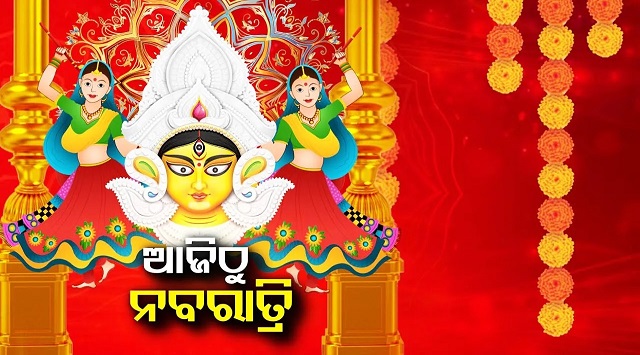Navratri 2023 begins today: Know the Ghatasthapana Muhurat, Significance of the day
The vibrant Hindu festival celebrating the divine feminine Navratri has begun today, on Sunday, October 15.
Navratri, the vibrant Hindu festival celebrating the divine feminine, has begun today, on Sunday, October 15. This nine-night festival is observed twice a year, once in the spring and once in the fall. It is a time for spiritual reflection, fasting, feasting, and dedication to honouring the nine forms of the goddess Durga.
The festival commences with the Ghatasthapana ritual on the first day and concludes with the observance of Maha Navami on Monday, October 23. Devotees of Maa Durga observe this festival with great enthusiasm, worshipping the nine forms of Adi Shakti known as Navdurgas.
The nine avatars of the goddess are Maa Shailputri, Maa Brahmhacharini, Maa Chandraghanta, Maa Kushmanda, Maa Skandamata, Maa Katyayani, Maa Kalaratri, Maa Mahagauri, and Maa Siddhidatri. Shardiya Navratri begins with the worship of Maa Shailputri on the first day.
Muhurat:
According to Drik Panchang, the Ghatasthapana or Kalash Stapana ritual should be performed on October 15, which is the first day of Shardiya Navratri. The auspicious Ghatastapana Muhurat falls during Abhijit Muhurat on Pratipada Tithi, within the Chitra Nakshatra. The ideal time for Ghatastapana begins at 11:44 a.m. and concludes at 12:30 p.m.
Puja Vidhi (Rituals)
- The puja begins with devotees making a promise to worship the goddess for nine days with devotion, a pure heart, and a clear conscience.
- On the first day, a clay pot, or kalash, is set up to symbolise the presence of the goddess. The kalash is filled with water, and barley seeds are planted in it.
- An image or idol of Mata Shailputri is placed on an altar and decorated with flowers and jewellery.
- The puja involves reciting various mantras and hymns dedicated to Mata Shailputri. One commonly chanted mantra is “Om Hreem Kleem Shailputryai Namah.”
- A ritual called Aarti is performed with devotion. It involves waving a lit lamp in front of the deity while singing hymns.
- Devotees offer flowers, fruits, coconuts, and sweets to the goddess as a sign of their devotion and respect.





 Ms Kalinga
Ms Kalinga